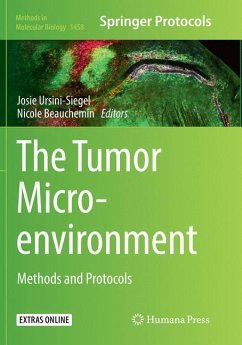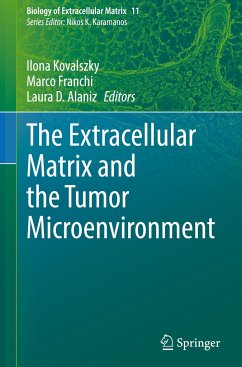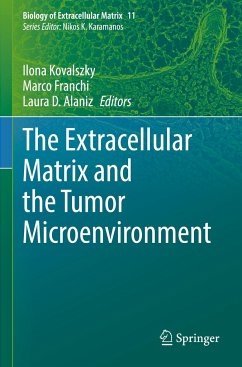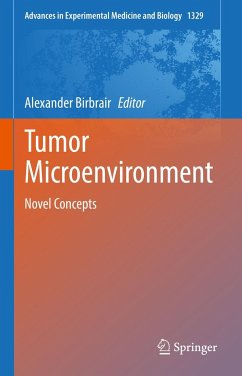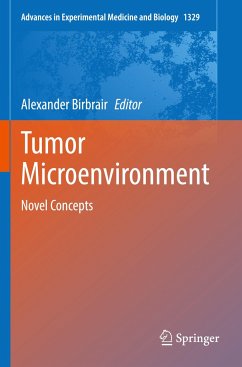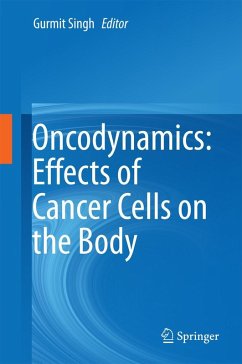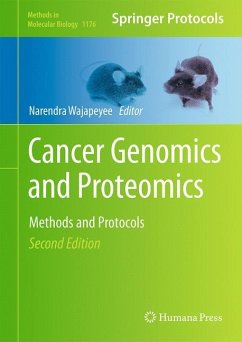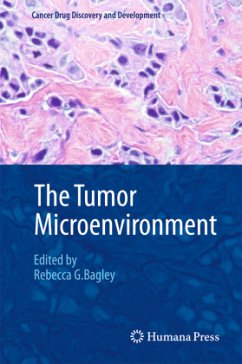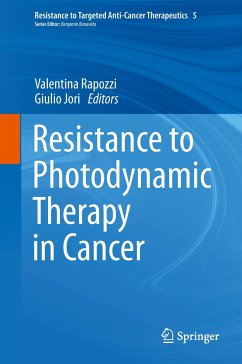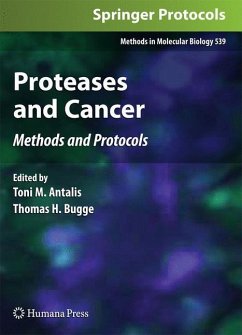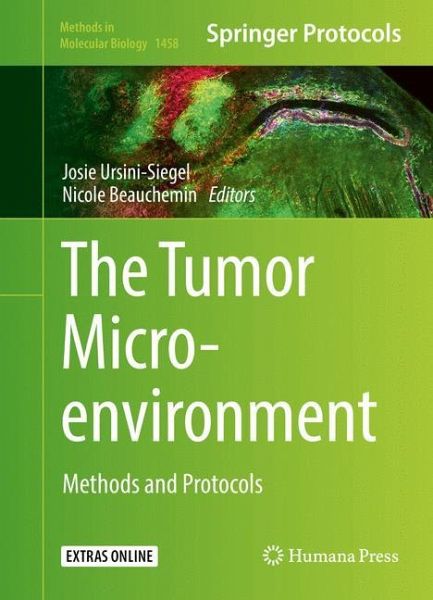
The Tumor Microenvironment
Methods and Protocols
Herausgegeben: Ursini-Siegel, Josie; Beauchemin, Nicole

PAYBACK Punkte
38 °P sammeln!
This book covers core and emerging in vitro and in vivo protocols used to study how various components of the tumor microenvironment are established and subsequently interact with tumor cells to facilitate carcinogenesis. In addition, the book examines research topics including cellular and molecular biology approaches, in vivo genetic approaches, various "omics"-based strategies, therapeutic strategies to target the microenvironment, and, finally, advanced techniques in the fields of tissue engineering and nanotechnology. Written and validated in the laboratories of a number of trusted collab...
This book covers core and emerging in vitro and in vivo protocols used to study how various components of the tumor microenvironment are established and subsequently interact with tumor cells to facilitate carcinogenesis. In addition, the book examines research topics including cellular and molecular biology approaches, in vivo genetic approaches, various "omics"-based strategies, therapeutic strategies to target the microenvironment, and, finally, advanced techniques in the fields of tissue engineering and nanotechnology. Written and validated in the laboratories of a number of trusted collaborating authors for the highly successful Methods in Molecular Biology series, chapters contain introductions to their respective topics, lists of the necessary materials and reagents, step-by-step, readily reproducible laboratory protocols, and tips on troubleshooting and avoiding known pitfalls. Practical and authoritative, The Tumor Microenvironment: Methods and Protocols constitutes a compendium of techniques now available to a broad audience, including basic and clinician scientists, systems biologists, and biological engineers.





